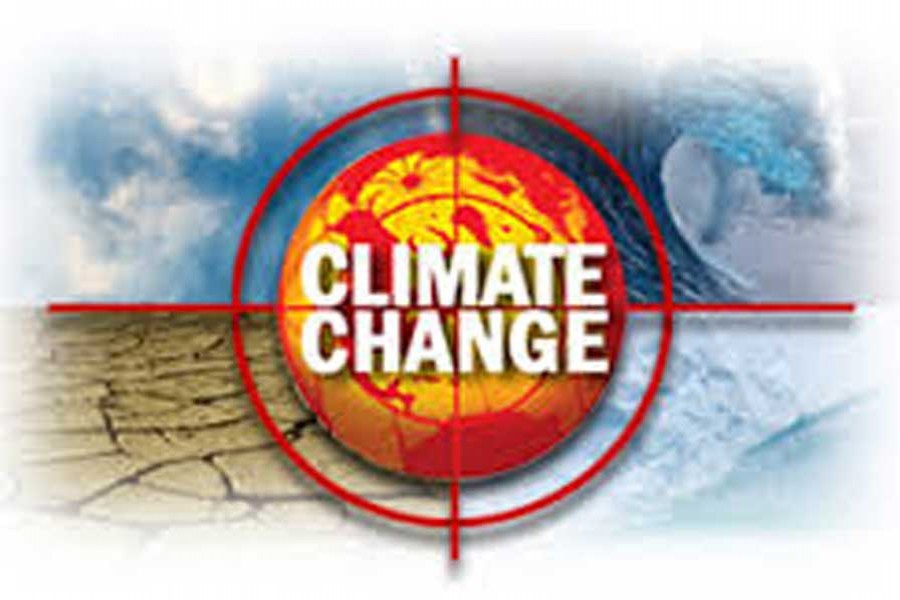Almost 75 per cent of the world's disaster displacement in 2018 - that's over 12.6 million people forced to relocate from their homes - occurred in Asia and the Pacific.
According to recent modeling by the Internal Displacement Monitoring Centre, an average 240 out of every 100,000 people across the region are likely to be displaced during any given year in the future. Floods alone are expected to cause, on average, 11.5 million new displacements each year, 87 per cent of which will be in urban areas.
Displacement is corrosive to development. At best, it causes temporary interruption to lives and livelihoods. At worst, it separates families, dislocates communities, destroys human and social capital, reverses poverty reduction gains, and increases fragility. It can exacerbate preexisting vulnerabilities and create new risks. Certain groups - such as women, children, older people, people with disabilities, and indigenous communities - often face further marginalisation as a result of being displaced.
Governments across Asia and the Pacific have dramatically improved early warning and emergency relief in response to the disruptive impact of disaster displacement. In November 2019 the government of Bangladesh preemptively evacuated over 1.8 million people ahead of cyclone Bulbul. While 12 people tragically died, this figure is a stark contrast to the impact of the 1970 Bhola cyclone that killed an estimated 300,000 to 500,000 people.
The 2015 Nepal earthquake affected around 8.0 million people or one-third of the population. The international community responded with search and rescue teams and immediate aid deliveries. While the importance of early warning and emergency relief is well understood, the longer-term impact of disaster displacement is rarely publicised or resourced.
In some instances, families in the region have had to wait for years after a disaster before they could return home. In other cases, even those holding title to their land have been effectively rendered landless and have had to resort to surviving as informal settlers on government or private lands. The cost of protracted displacement, from both a social and economic perspective remains largely unquantified.
Investments in the prevention and response to the long-term impacts of disaster displacement is typically under resourced for two key reasons - a lack of data and an underestimation of the full costs of displacement.
In many countries, policymakers have not quantified the multidimensional impacts of displacement, particularly the gender, socioeconomic, and temporal (temporary, including seasonal, or longer term) dimensions, the current and expected long-term trends of displacement risk, or exacerbating factors including climate change and unplanned development. Given that many countries face multiple displacement triggers, there is a need to establish a knowledge base that accounts for the full costs of disaster displacement.
To address this, preparedness and development planning needs to account for both disaster and displacement risks, particularly in light of the projected urban growth and the likelihood that much of this growth will take place in informal settlements where disaster and displacement risks are concentrated.
Closing the knowledge gap on disaster displacement, including quantifying the risk, is challenging. The limitations and, in some areas, absence of data along with reliance on imperfect proxies must be addressed. While significant advances have been made toward data collection through the use of innovative technologies such as anonymous mobile phone data and the use of aerial and satellite imagery analysis, the capacity of governments to record and analysis data needs to improve. Common standards and enhanced cooperation can contribute, as can a greater awareness of the risk levels.
The Asian Development Bank (ADB) is supporting efforts to downscale research and develop new models on disaster displacement in Asia and the Pacific to help answer some key questions, including what are the trends and projections for disaster displacement in the region, what is the temporal (temporary, including seasonal, or longer term) nature of displacement, and what are the expected costs of displacement risk in the context of natural hazards. It aims to provide policymakers with potential measures and best practice to support preparedness and management of immediate and long-term displacement.
Quantifying displacement and unpacking long-term implications can help governments across the region make evidence-based and responsive policies and investment decisions. With improved knowledge, Asia and the Pacific can do better to reduce and manage disaster displacement.
Steven Goldfinch is a Disaster Risk Management Specialist at Sustainable Development & Climate Change Department, ADB.
Rebekah Beatrice Ramsay is a Social Development Specialist at South Asia Department, ADB.


